
Want to sell courses online? You’re in the right place.
As someone in the training industry, I often encounter instructors who are eager to share their knowledge but struggle to sell courses effectively online.
Are you facing challenges in reaching a wider audience? Do you find it difficult to engage learners or stand out in a crowded market?
In this blog post, I have compiled essential strategies and insights to help you overcome these hurdles. By mastering the art of selling courses online, you can unlock the full potential of your educational offerings and make a lasting impact.
Let’s explore how you can transform your challenges into opportunities.
How to Sell Online Courses: 9 Best Strategies
Here are the 9 best strategies for effectively selling online courses and turning learners into raving fans.
Remember, success depends on a strategic approach that maximizes engagement and ensures your content reaches the right people.
Here are nine key strategies to consider:
1. Select Your Course Topic
Selling an online course becomes a breeze when you choose the right topic. Here’s how you can do so:
- Expertise and Market Demand Correlation: Initiate by cataloging subjects where your proficiency is evident, and your passion for teaching is palpable. This authenticity in expertise ensures the depth and originality of the course material, which is a significant determinant of value for learners.
- Data-Driven Market Analysis: Implement a systematic market analysis to understand the demand for learning topics. Employ analytical tools such as Google Trends and keyword research tools to scrutinize market trends and learner interests. Social listening on platforms like Twitter and LinkedIn can also yield insights into trending topics and skill gaps.
- Competitive Analysis: Conduct a thorough competitive analysis using frameworks like SWOT (Strengths, Weaknesses, Opportunities, Threats) to evaluate what competing courses offer. This assessment should encompass content quality, delivery methods, pricing strategies, and user engagement levels.
- Learner-Centric Feedback Mechanisms: Engage with your potential audience through surveys, focus groups, or one-on-one interviews to gather firsthand information about their learning preferences and expectations. This direct feedback loop can inform the course development process and ensure alignment with learner needs. In this case, you can also try out a skills gap analysis. Here’s a comprehensive guide on how you can do it.
- Strategic Topic Selection: Choose a course topic that showcases your expertise and fills a niche in the market. This strategic alignment increases the course’s marketability and sustains learner engagement, thereby enhancing enrollment rates and fostering positive word-of-mouth referrals.
To create and sell online courses, we often use ProProfs Training Maker’s library to leverage various customizable templates that ensure relevance and high learner engagement.
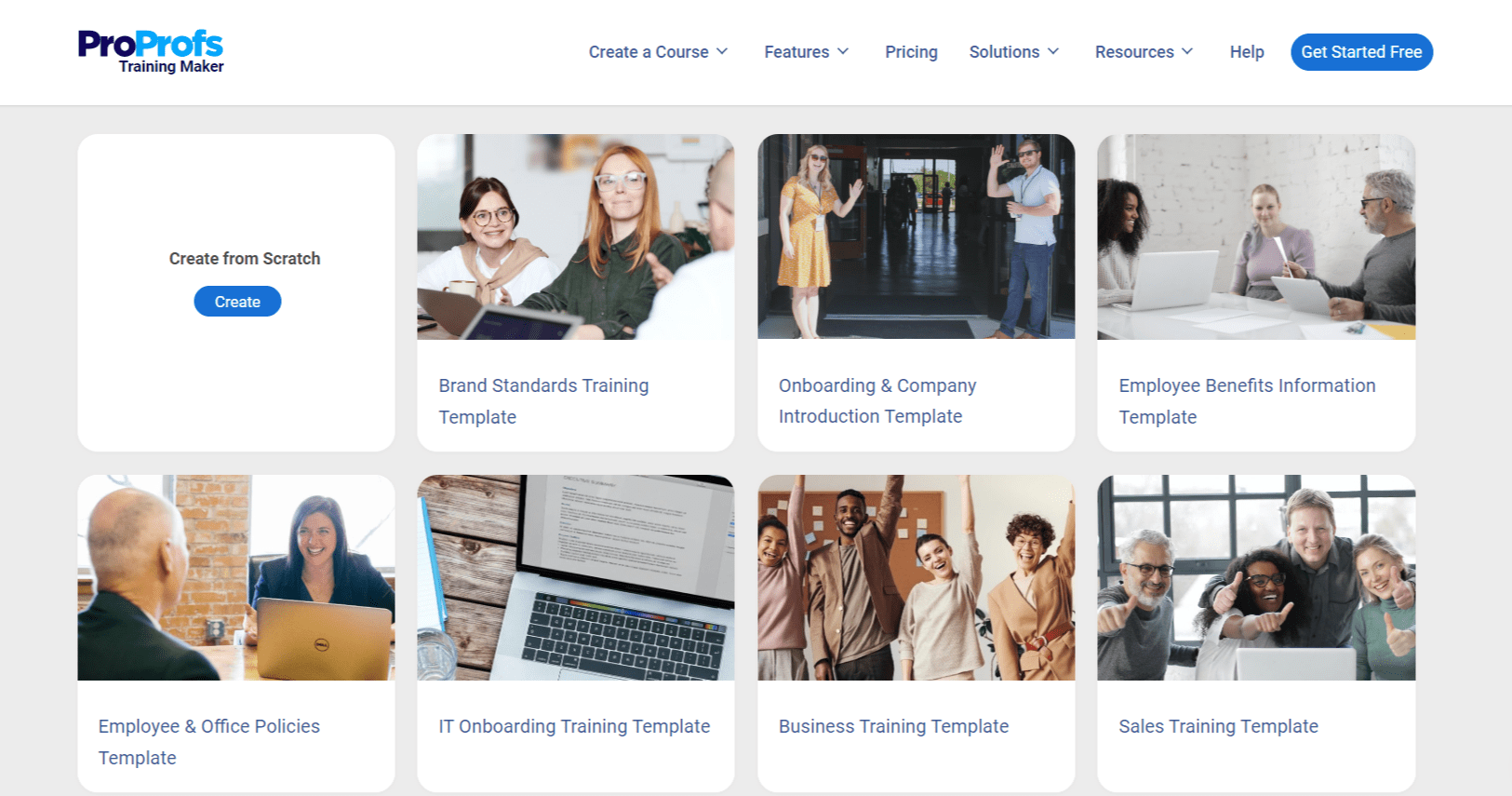
2. Identify Your Target Audience
Identifying your target audience is pivotal in designing and marketing your online course. It involves a deep dive into understanding who your potential learners are, their needs, and their learning preferences.
Here’s how you can do it:
- Learner Personas: Begin by sketching out profiles of your ideal learners. These personas should include basic demographic information such as age, occupation, education level, and interests. This helps in creating content that resonates with their aspirations and needs.
- Information Gathering: Employ tools like online surveys and interviews to collect data about your audience. You can also analyze interactions on your website or social media to gain insights into their behaviors and preferences.
- Data Analysis: Look at the data to understand the learning habits, challenges, and solutions your audience is seeking. This will help you tailor your course content to be more effective and engaging.
- Course Design and Marketing: With a clear picture of your audience, design your course to meet their specific needs and market it in a way that speaks directly to them. This ensures that your course content is not just informative but also compelling and relevant to their professional growth.
- Feedback and Adaptation: Set up a mechanism to collect feedback from your learners. This will allow you to continuously improve your course content and ensure it stays aligned with their evolving needs.
By focusing on these steps, you can create courses that are not only educational but also highly engaging, leading to better enrollment rates and overall satisfaction among your learners. Tailoring your approach to your audience is key to success in the competitive world of online education.
3. Create Engaging and Valuable Course Content
Creating engaging and valuable course content is essential for retaining learners and ensuring they gain maximum benefit from your educational offerings.
- Modular Content Architecture: Design your course content using a modular framework that allows for incremental learning. Each module should encapsulate a discrete learning objective and be composed of microlearning units that facilitate bite-sized information processing.
- Multimodal Instructional Design: Integrate a diverse array of pedagogical tools—including asynchronous video lectures, synchronous webinars, e-texts, interactive simulations, and hands-on projects. This multimodal approach caters to various cognitive styles and promotes multisensory engagement.
- Continuous Content Iteration: Implement a dynamic content update protocol incorporating real-time industry insights and technological evolutions. Use adaptive learning systems to personalize content delivery based on learner performance and feedback.
- Gamification Mechanics: Embed game design elements in the educational framework to foster intrinsic motivation and behavioral engagement. Use achievement badges, certification pathways, and progress leaderboards to introduce a competitive edge and reward-based learning.
- Analytical Feedback Loops: Establish data-driven feedback mechanisms that leverage learning analytics to monitor engagement and efficacy. Use this data to refine content strategies and ensure alignment with learner expectations and industry standards.
These sophisticated content development practices enhance the educational value of your courses, bolster their marketability, and increase learner retention rates. The goal is to create a technologically advanced learning environment that is both intellectually stimulating and professionally enriching for the learners.
4. Price Your Course Right
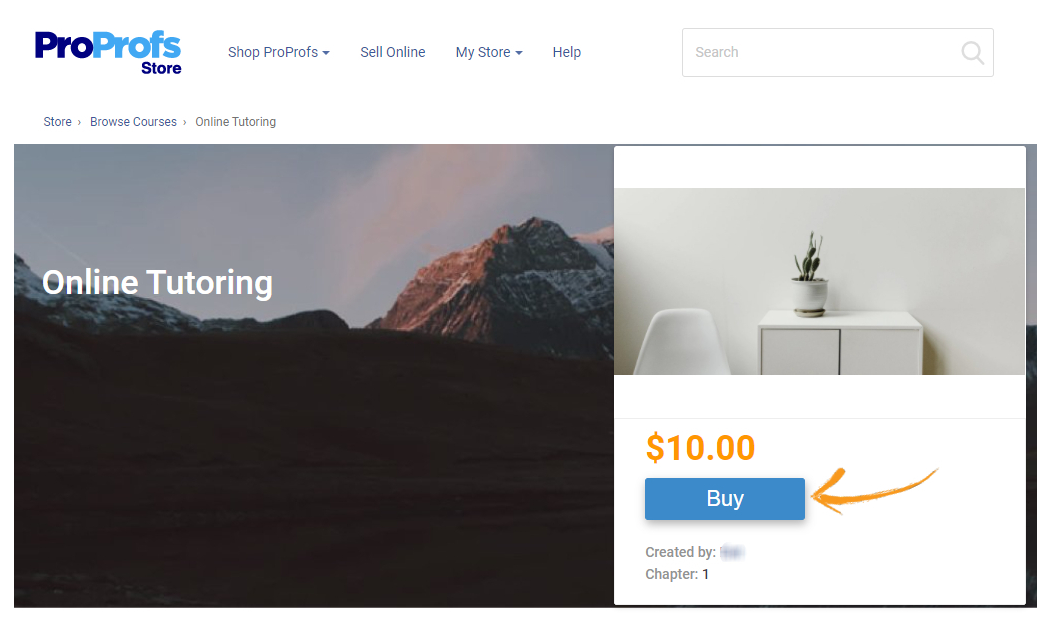
Pricing your course correctly is critical to attracting learners and maximizing revenue. Various pricing strategies can be adopted depending on your course content, length, audience, and overall business goals.
- Strategic Pricing Framework: Develop a comprehensive pricing model that aligns with your educational content’s intrinsic value and market position. This involves evaluating various pricing configurations, such as tiered access levels, subscription-based access, and singular payment structures.
- Market Analysis: Conduct a thorough market analysis to benchmark your pricing against competitors. This includes an assessment of the perceived monetary worth of similar offerings and the financial commitment your target demographic is prepared to make.
- Value Proposition: Gauge the unique value proposition of your course content. Premium, specialized content typically warrants a higher investment due to its scarcity and the high impact it can have on learners’ professional trajectories.
- Incentive Structures: Implement introductory pricing strategies or incentive programs to stimulate initial enrollment. This can serve as a catalyst for building a robust learner base and establishing market credibility.
- Dynamic Pricing Adjustment: As your educational brand gains recognition for quality and exclusivity, dynamically adjust your pricing to mirror the enhanced value proposition of your offerings.
- Accessibility and Inclusivity: Ensure that your pricing strategy maintains a balance between reflecting the value of your course and remaining attainable for your target audience, thus optimizing both enrollment figures and revenue streams.
- Analytical Decision-Making: Use data-driven insights to inform your pricing decisions, creating a symbiotic relationship between your business objectives and learner satisfaction.
With these strategies, you can establish a pricing strategy that not only underscores the worth of your educational content but also fosters a conducive learning environment for your audience. This strategic pricing ensures the sustainability and growth of your educational venture.
5. Select the Best Platform to Sell Online Courses
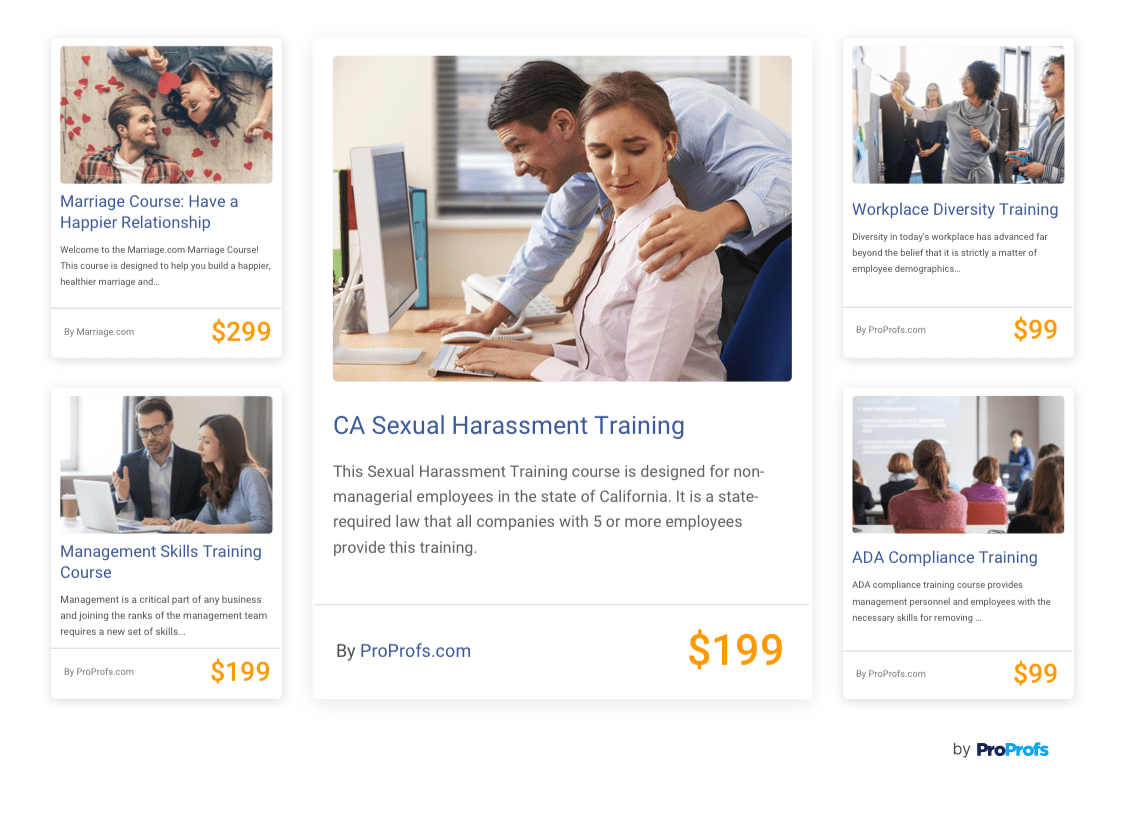
This step answers your question about – how to find the best place to sell online courses.
You have to choose the right platform to sell online courses, as it is crucial to reaching your target audience and providing them with a seamless learning experience. Here are some factors that you need to consider:
- Platform Features: Evaluate the API capabilities, customization options, and analytics tools offered by the platform to ensure they meet your course delivery requirements.
- User Experience (UX): Analyze the user interface (UI) design for intuitive navigation and accessibility to ensure a frictionless experience for learners.
- Teaching Style Compatibility: Assess the platform’s support for various content delivery methods such as synchronous/asynchronous learning, interactive modules, and multimedia integration.
- Customer Support: Look for platforms with robust technical support, including 24/7 help desks, community forums, and comprehensive knowledge bases.
- Marketplace Presence: Platforms like ProProfs Training Maker, Udemy, Teachable, and Coursera offer marketplace insights and learner engagement metrics that can inform your marketing strategies.
- Self-Hosting Considerations: If opting for self-hosting, ensure you have the necessary infrastructure for web hosting, content management systems (CMS), and secure payment gateways.
- Scalability: The platform should be able to handle increased load capacity and user concurrency without compromising performance as your user base grows.
- Payment Processing: Verify the platform’s support for multiple payment methods and currencies and its compliance with financial regulations like PCI DSS.
- Integration Capabilities: Ensure the platform can seamlessly integrate with third-party tools such as CRM systems, email marketing platforms, and analytics software to streamline operations.
- Security Measures: Confirm that the platform adheres to data protection standards and employs encryption, firewalls, and regular security audits to safeguard user data.
We sell our courses and quizzes using an eCommerce LMS. This robust platform enables us to track learner progress, provide personalized feedback, and foster a collaborative educational environment. Our focus is on delivering high-quality content that is both engaging and informative, ensuring that each student receives the best possible online learning experience. With our LMS, we’re able to scale our offerings and adapt to the diverse needs of our learners, all while maintaining a seamless and user-friendly interface.
6. Market Your Course
Before selling courses online, marketing needs to be done. It helps attract learners to your online courses. Some strategies we follow are:
- Digital Marketing Integration: Employ a multichannel digital marketing strategy that encompasses data analytics to track engagement and conversion rates across platforms.
- Social Media Algorithms: Use algorithmic targeting on platforms like Facebook, LinkedIn, and Instagram to optimize ad placements and user engagement metrics.
- Content Diversification: Develop a content strategy that includes SEO-optimized blog posts, podcasts with industry experts, and interactive webinars to demonstrate thought leadership.
- Email List Segmentation: Segment your email list based on user behavior and preferences to deliver personalized email campaigns with A/B testing for effectiveness.
- Lead Magnets: Offer value-driven lead magnets, such as free mini-courses or trial modules, to capture leads and provide a preview of your course content.
- Conversion Rate Optimization (CRO): Implement CRO techniques to improve the user journey from initial contact to course enrollment.
- Authority Building: Establish your credibility by contributing to peer-reviewed journals or speaking at industry conferences, and share these experiences in your marketing materials.
- Growth Metrics: Monitor KPIs such as learner acquisition cost, lifetime value, and engagement rates to refine your marketing strategies.
We use these strategies to market most of our courses. Don’t take my word for it; try them yourself!
7. Offer Discounts and Promotions
Offering discounts and promotions is a proven strategy to increase course enrollments and revenue.
- Dynamic Pricing Algorithms: Implement dynamic pricing algorithms that adjust discounts based on demand, user engagement, and market trends to optimize revenue.
- Behavioral Analytics: Use behavioral analytics to identify price-sensitive segments and tailor promotions to those specific groups.
- Promotional Cadence: Develop a promotional calendar that strategically schedules early bird pricing, flash sales, and seasonal offers to maximize urgency and sales velocity.
- Value Proposition: Craft a value-based pricing strategy that communicates the quality and outcomes of your courses, justifying the investment even with applied discounts.
- Loyalty Programs: Integrate a loyalty program that rewards returning learners with discounts, encouraging repeat enrollments and fostering brand loyalty.
- Conversion Tracking: Employ conversion tracking tools to measure the effectiveness of discount campaigns and adjust strategies accordingly for future promotions.
- Community Engagement: Use discounts as a tool for community building, offering exclusive deals to members of your learning community to enhance engagement and retention.
- Financial Modeling: Conduct financial impact assessments to ensure that discount strategies align with your business objectives and long-term financial health.
Using these strategies can create a sophisticated discount and promotion strategy that not only drives immediate sales but also supports sustainable growth and learner engagement.
8. Engage With Your Audience
Engaging with your audience is critical for fostering a vibrant learning community and encouraging course completion.
- Interact with Your Learners: It’s important to talk and listen to your learners. Use online forums, live question-and-answer sessions, and ways for them to give feedback. This makes learners feel like they’re part of a group and that their opinions matter, which can make them happier and more satisfied with the course.
- Make Your Courses Interactive: Add activities like quizzes, assignments where learners review each other’s work, and group projects. These activities help learners work together and apply what they’re learning in real situations. Keep your course fresh and interesting by adding new content and asking learners for their ideas, which helps the course stay relevant and useful for them.
- Stay Connected Outside the Course: Don’t just interact with learners during the course. Use social media, email newsletters, and direct messages to keep the conversation going. Staying in touch helps create a dedicated group of learners who are more likely to come back for more courses and tell others about their good experiences.
By focusing on these areas, you can create a learning environment that keeps learners engaged, supports their success, and helps your courses stand out.
9. Collect and Analyze Feedback to Improve Your Course
Collecting and analyzing feedback is essential for refining your courses and ensuring they meet learner expectations.
- Systematic Feedback Collection: Establish structured methods for collecting feedback, such as online surveys, structured interviews, and direct feedback mechanisms embedded within the course. This systematic approach ensures comprehensive and consistent data gathering.
- Quantitative and Qualitative Analysis: Evaluate both quantitative data, such as course completion rates and qualitative feedback from learner testimonials. This dual analysis provides a holistic view of the course’s impact and areas for enhancement.
Here’s a quick video on: How to Analyze Training Course & Quiz Results - Data-Driven Course Optimization: Use the collected data to refine course content, instructional methodologies, and promotional tactics. This optimization is grounded in empirical evidence derived from learner interactions and achievements.
- Responsive Course Development: Incorporate feedback loops that allow for the agile adaptation of course materials. This responsiveness to learner input ensures that the course evolves to meet emerging educational demands.
- Brand Differentiation through Quality: By integrating feedback into the course refinement process, you show a dedication to quality and learner satisfaction. This commitment can set your brand apart in a crowded marketplace.
- Continuous Improvement Cycle: Engage in an iterative process of course improvement, leveraging feedback to maintain course relevance and effectiveness. This cycle fosters a reputation for excellence and attracts both new and returning learners.
With this feedback collection and analysis, you can ensure that your courses are continually improved and aligned with learner expectations. This enhances the educational experience and the value of your offerings.
Now, at this stage, you must be wondering: which is the best place to sell online courses? No worries. I have also curated a quick list of the platforms you can use to sell courses online.
Where to Sell Online Courses: Top 5 Platforms
Over the last few years, I have seen most industry leaders using these platforms, and I have also referred to a few review sites to create this list.
1. ProProfs Training Maker
In my research, I’ve found ProProfs Training Maker to be the best platform for selling courses online. You can sell your courses directly through ProProfs, use Stripe to process payments, and even set up coupons and promotions to boost sales. The platform also provides detailed sales analytics to help you understand your earnings and customer base. The best part? You can sell online courses on this platform for free! There is no monthly or set-up fee.
Price: Forever free plan for small teams. Paid plans start at $1.97/active learner/month. No hidden charges. 15-day money-back guarantee.
2. Udemy
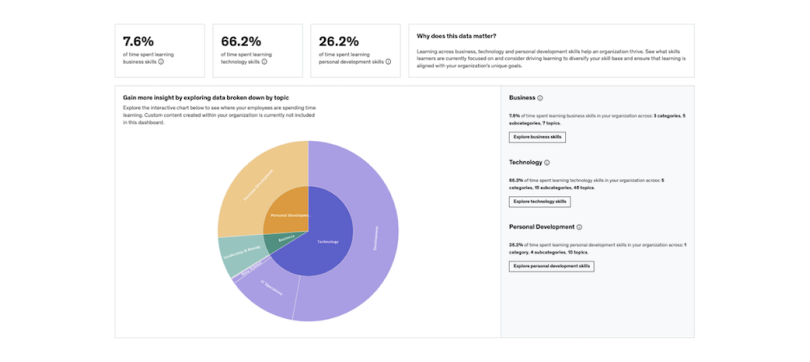
Udemy has a broad reach and is great for those starting to sell courses. It’s well-known for its diverse course offerings and has built-in promotional tools that can help attract learners from around the world.
Price: Starts at $10.20 for a single individual.
3. Skillshare
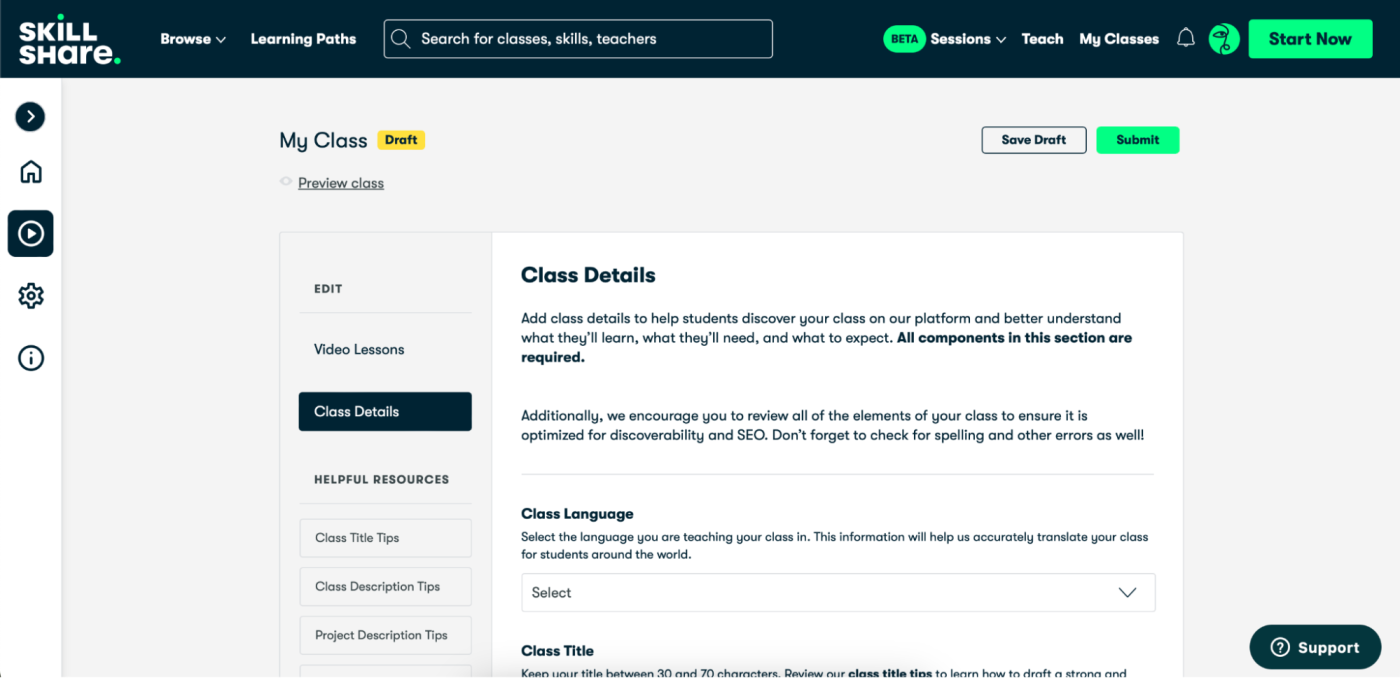
Skillshare focuses on creative learning, which makes it a top choice for courses in the arts and design. The platform encourages peer-to-peer interaction, enriching the learning experience through collaborative projects.
Price: Free trial available. Custom pricing
4. Teachable
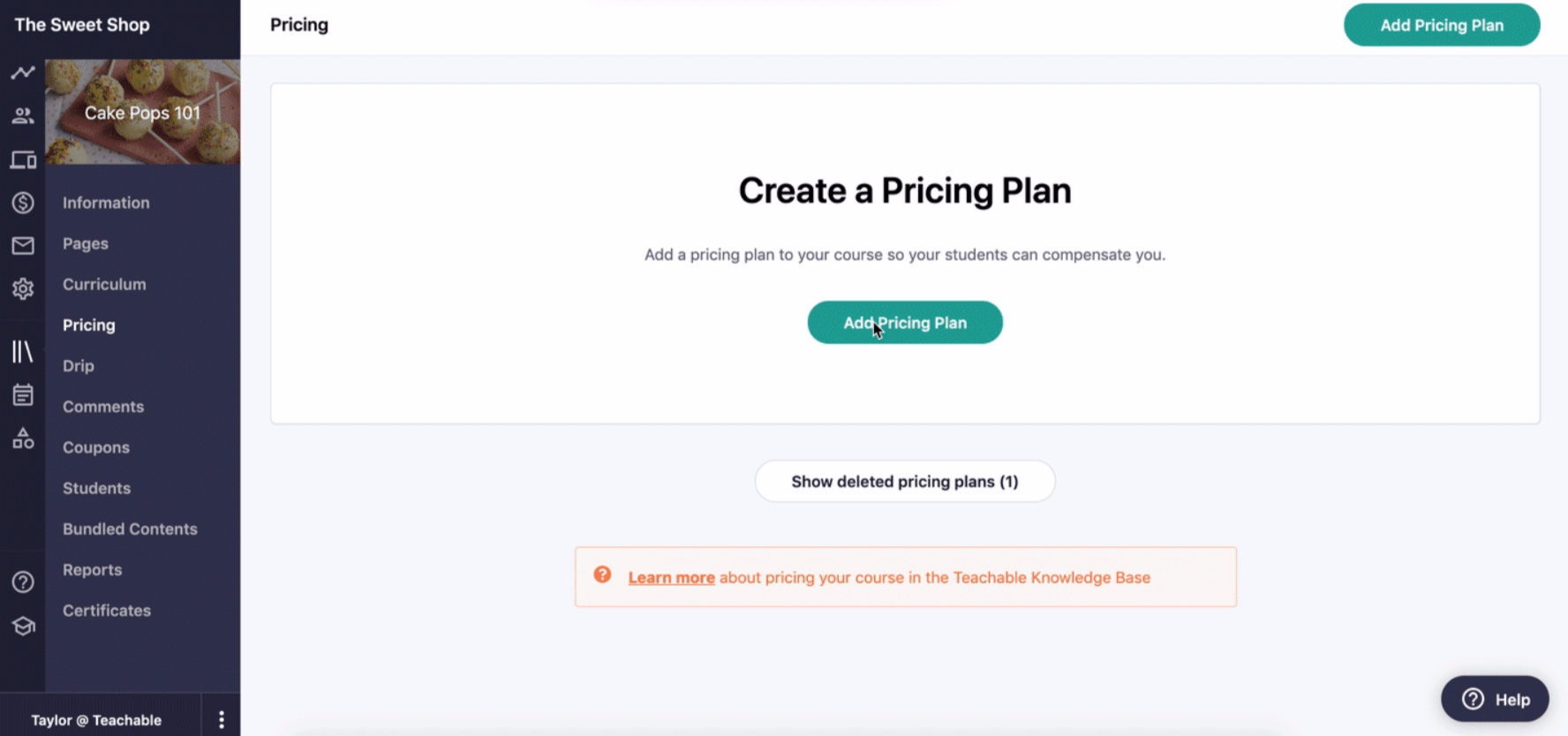
Teachable provides comprehensive tools for creating a branded online school. It’s particularly useful for those who want detailed insights into their student data, which can aid in crafting targeted marketing strategies.
Price: It starts at $0/month and is limited to one published product of each type. You must pay a $1 + 10% transaction fee.
5. Thinkific
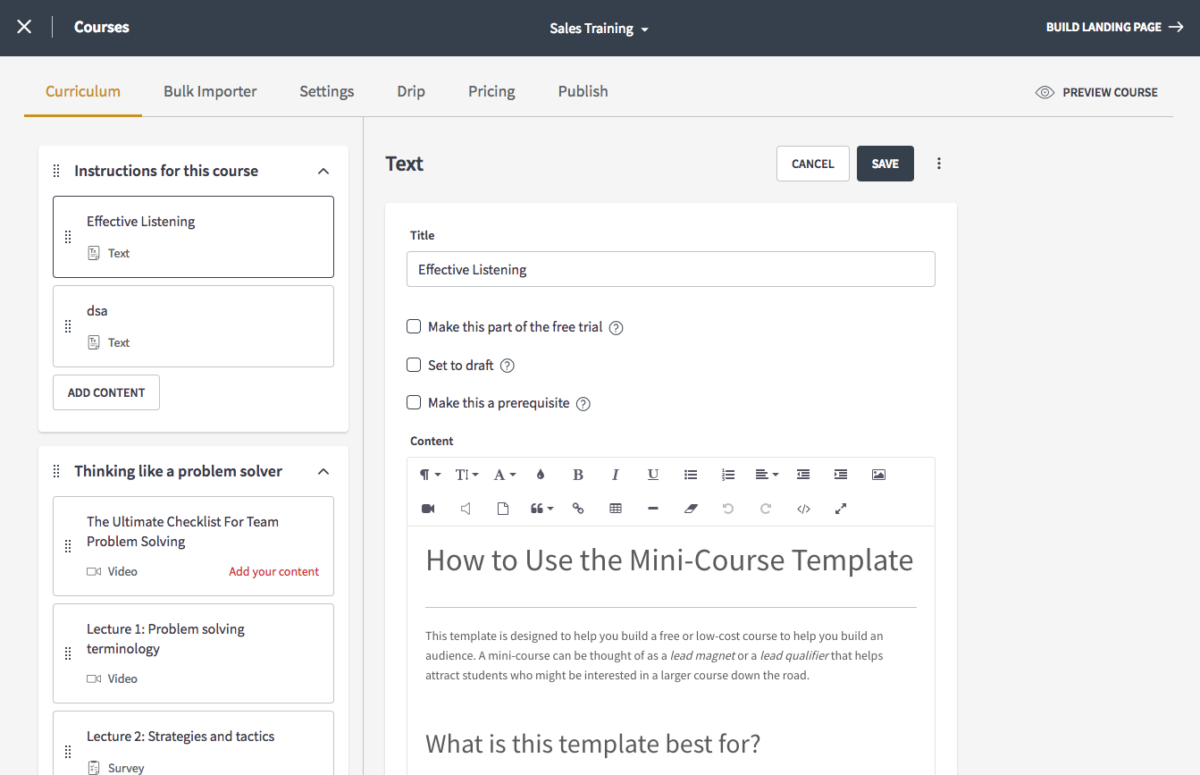
If you want to sell online courses for free, Thinkifc is a great pick. The tool is highly customizable, and it allows course creators to tailor their offerings. This platform is suitable for those looking to expand their courses with professional-grade features while maintaining a sleek course presentation.
Price: Free plan available but limited to one course. Paid plans start at $36/month
Each of these platforms brings unique benefits based on different needs and audience types in the online course industry.
Is Selling Online Courses Profitable?
Yes, of course, it is. I think selling online courses can be highly profitable and offers a sustainable revenue model for creators, trainers, and educators. The key advantage is the scalability of digital products; once you create a course, you can sell it to many customers without additional production costs. This scalability, combined with low startup costs compared to physical businesses, makes it an attractive option.
Moreover, the global e-learning market is growing rapidly, fueled by technological advancements and a shift towards remote learning, which increases the potential customer base for online courses. Effective marketing and a well-designed course that meets learners’ needs can lead to substantial profit margins.
However, the profitability also depends on choosing the right platform, targeting the correct audience, and using strategic pricing models. By addressing these factors, selling online courses can indeed become a lucrative endeavor.
Ready to Sell Training Courses Online?
As we wrap up this guide on how to sell online courses, I encourage you to put these methods to work and see the difference they make. I’ve shared strategies and tips from my own experience that have helped many trainers succeed online.
Now, it’s your turn.
Take action by choosing the right platform, understanding your audience, and creating courses that engage and educate. Remember, your success depends on how well you connect with your audience and meet their needs. Use the marketing strategies we talked about, like using social media and sending targeted emails, and watch your enrollments increase.
Are you ready to improve your online teaching business? Use the tools and tips we’ve discussed, set the right prices, and keep in touch with your learners. It’s time to make an impact with your online courses.
Start now and see your courses transform lives and your business grow. You have a clear path to success in selling online courses. Let’s start this journey together.
Frequently Asked Questions
What are the benefits of selling an online course?
Selling an online course offers several advantages. Firstly, it provides a scalable way to earn income; once you create and upload a course, you can sell it to many people without additional costs. Next, it allows for flexibility in teaching and learning, as users can access the content from anywhere at any time. Selling online courses helps you reach a global audience, increasing your impact and brand presence. It’s also a way to establish yourself as an expert in your field, attracting more opportunities.
What are some common mistakes to avoid when selling an online course?
One common mistake in selling online courses is not understanding the target audience, which leads to courses that don’t meet learners’ needs or expectations. Overpricing or underpricing the course can also deter potential learners. Another error is offering too much content without a clear structure, which can overwhelm learners. Failing to market the course effectively limits its visibility and potential reach. Lastly, neglecting to update and improve the course content based on feedback can result in outdated information and decreased student satisfaction.
Is it possible to update my online course after it’s been published?
Yes, you can update your online course after publishing it. In fact, regular updates are essential to maintain the course’s relevance and value. Updating allows you to incorporate new insights, respond to learner feedback, and integrate the latest industry trends. Most online course platforms offer straightforward tools for revising content, whether adding new modules, updating existing lessons, or improving multimedia resources. Continuous improvement also helps keep the course competitive and engaging for new and returning learners.
FREE. All Features. FOREVER!
Try our Forever FREE account with all premium features!







